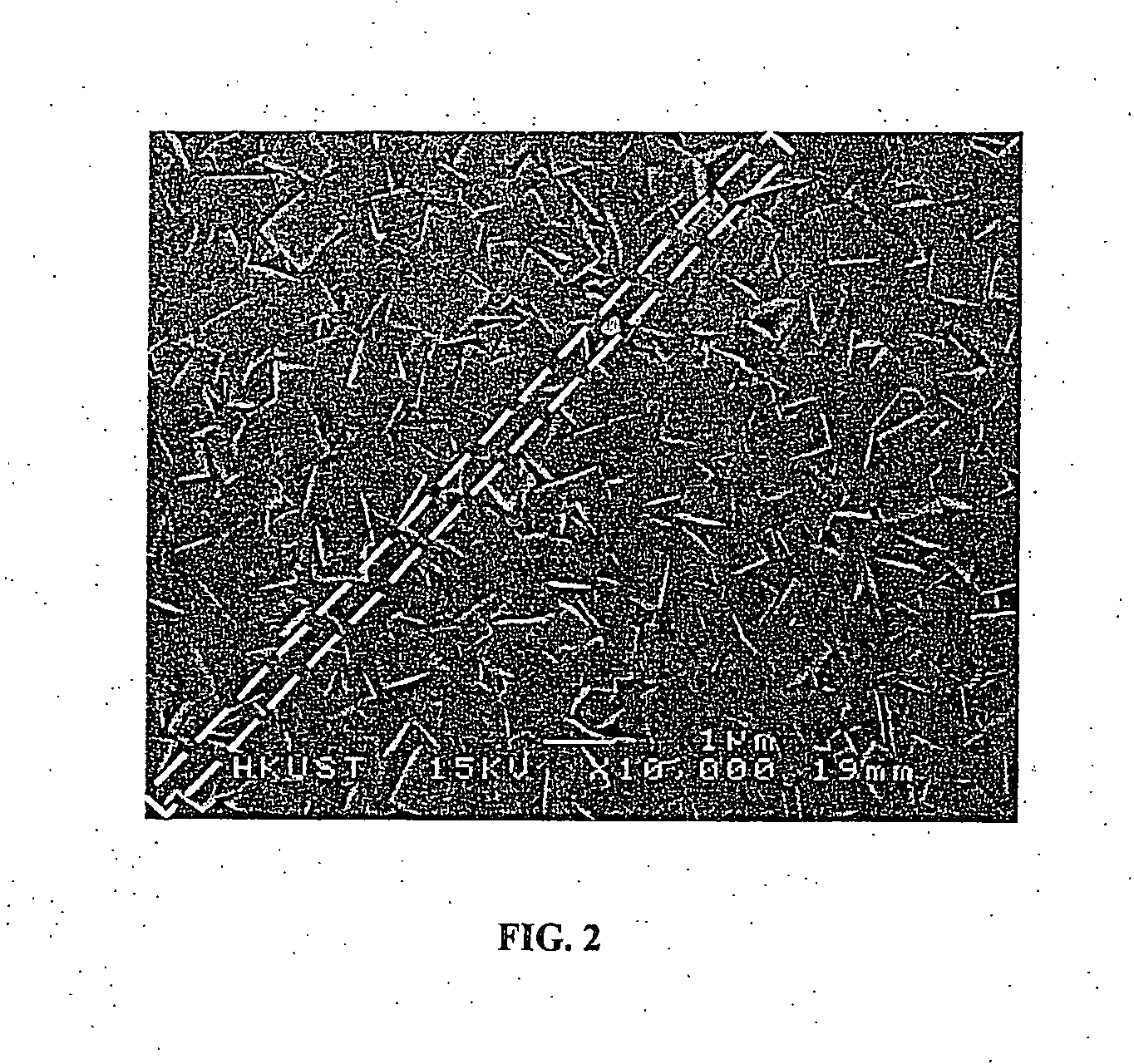Methods for fabricating zeolite micromembranes
a technology of zeolite and micromembrane, which is applied in the direction of chemical/physical processes, inorganic chemistry, separation processes, etc., can solve the problems that even single zeolite crystals prepared by a conventional prior art calcination method may suffer from crack formation, cracks may also penetrate through the thickness of the membrane, etc., and achieve less aggregation or irreversible bonding
- Summary
- Abstract
- Description
- Claims
- Application Information
AI Technical Summary
Benefits of technology
Problems solved by technology
Method used
Image
Examples
example 1
Zeolite Activation Using Calcination
[0068] One common method for zeolite activation is air calcination. In the process, the organic templates in the zeolite pores are burnt off by elevating to a relatively high temperature of more than 673K in furnace. However, one problem associated with high temperature calcination is formation of cracks on the zeolite membrane due to the difference of thermal expansion of the zeolite membrane and the substrate. The cracks formed in the membrane decrease the molecular sieving property of the zeolite membrane. FIG. 1 shows an example of crack formation on zeolite membrane during air calcination.
Experimental Procedure
[0069] (1) Preparation of porous a-alumina tubes purchased from US Filters (the tubes has a nominal pore size of 0.1 um) for growth of zeolite membrane: [0070] a. The α-alumina tubes were cut into 75 mm in length. [0071] b. The tubes were rinsed by DDI water and dried in a 333K oven for overnight. [0072] c. The tubes were calcined a...
example 1a
Preparation of Zeolite Seeds
[0089] Zeolite seeds were prepared by nucleation of zeolite nanocrystals from homogeneous synthesis solution to obtain uniform seed size. Concentrated synthesis solution, low temperature and short synthesis time were often selected to prevent the growth of large zeolite crystals. The seeds were recovered and washed by centrifugation. The seeds were either suspended in water or solvent (e.g. ethanol, isopropanol, acetone, toluene). X-ray diffraction analysis and electron microscopy were performed to determine the zeolite type, crystallinity, size and morphology. The detailed procedures were:
(1) Zeolite Seed Syntheses
Silicalite-1 (Sil-1) Seeds
[0090] The Sil-1 seeds were used to crystallize and grow MFI-type zeolites. [0091] a. 60 ml of 1 M tetrapropylammonium hydroxide (TPAOH, Aldrich Chemicals) were placed in a Teflon container and stirred. [0092] b. 0.9 g of sodium hydroxide (NaOH, BDH, 99%) was slowly added to the TPAOH solution. [0093] c. The solu...
example 1b
Preparation of Zeolite Film
[0109] The zeolite films were grown on seeded alumina tubes from synthesis solution under hydrothermal conditions.
A. Silicalite-1 (Sil-1) Film Synthesis
[0110] a. A 100 ml synthesis solution with a composition of 8 SiO2: 1 TPA2O: 4000 H2O were prepared from tetraethyl orthosilicate (TEOS, Aldrich, 98%), TPAOH (1 M, Aldrich Chemicals) and DDI water, it was kept stirring for 24 hours. [0111] b. The outer surface of the seeded alumina tubes was wrapped by teflon tape to prevent unwanted zeolite growth. [0112] c. The wrapped tubes was placed in a Teflon sample holder and positioned vertically in the Teflon container. [0113] d. The container was slowly filled with the synthesis solution. [0114] e. The Teflon container was assembled in an autoclave and placed in a preheated oven at 130° C. for 24 h to grow 2 μm Sil-1 layer. [0115] f. The synthesis was rapidly quenched and the sample was thoroughly rinsed with DDI water. [0116] g. The tubes were dried at 333K ...
PUM
| Property | Measurement | Unit |
|---|---|---|
| Temperature | aaaaa | aaaaa |
| Temperature | aaaaa | aaaaa |
| Temperature | aaaaa | aaaaa |
Abstract
Description
Claims
Application Information
 Login to View More
Login to View More - R&D
- Intellectual Property
- Life Sciences
- Materials
- Tech Scout
- Unparalleled Data Quality
- Higher Quality Content
- 60% Fewer Hallucinations
Browse by: Latest US Patents, China's latest patents, Technical Efficacy Thesaurus, Application Domain, Technology Topic, Popular Technical Reports.
© 2025 PatSnap. All rights reserved.Legal|Privacy policy|Modern Slavery Act Transparency Statement|Sitemap|About US| Contact US: help@patsnap.com



